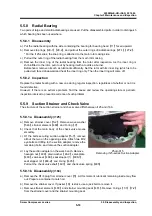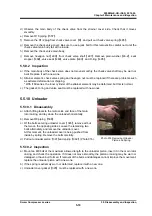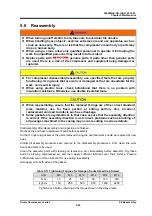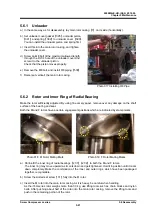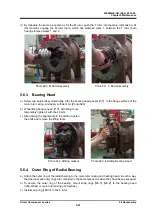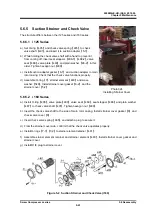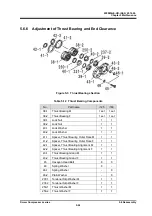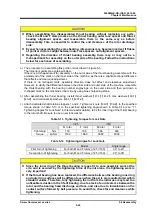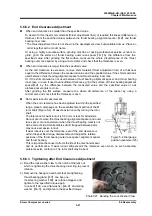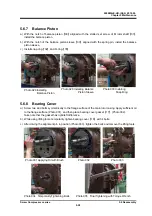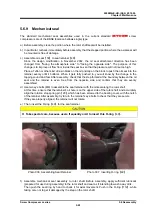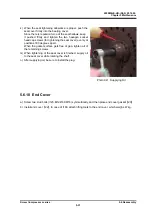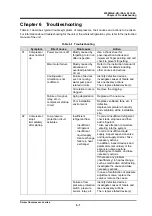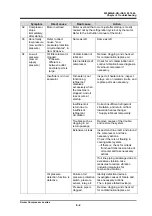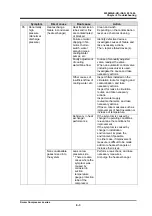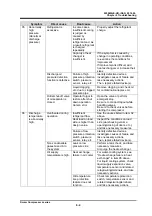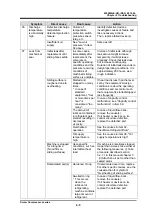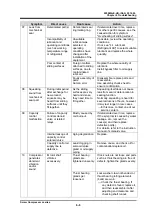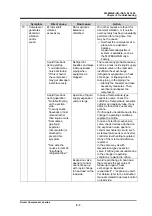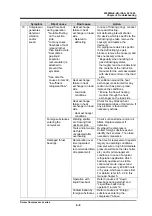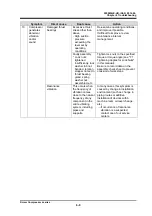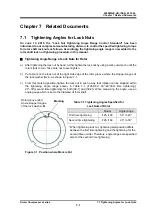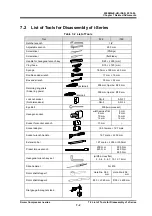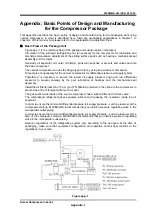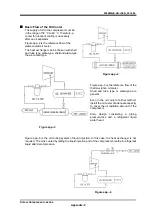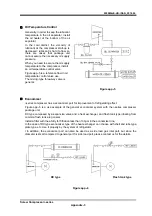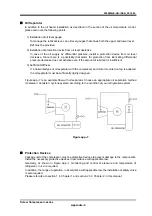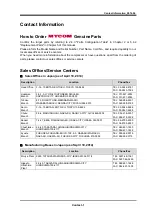
2200M4JE-HO-iS2-N_2014.04.
Chapter 6 Troubleshooting
Screw Compressor i-series
6-1
Chapter 6 Troubleshooting
Table 6-1 describes typical trouble symptoms of compressors, their causes and actions to be taken.
For information about troubleshooting for the unit or the whole refrigeration cycle, refer to the instruction
manual of the unit.
Table 6-1
Troubleshooting
Symptom
Direct cause
Root cause
Action
01 Compressor
does not start
up.
Power source is off.
Mostly caused by
forgetting to turn on
after inspection.
Use a check sheet for
post-inspection actions and
implement finger pointing and call
check to prevent forgetting.
Main motor failure
Mostly caused by
activation of
overload protection
circuit.
Refer to the instruction manual of
the motor for details including
other causes and actions.
Cooling water
circulation is not
confirmed.
Failure of devices
such as cooling
water pump and
related circuits
Identify defective devices,
investigate causes of failure and
take necessary actions.
Then, replace failed device(s).
Circulation route is
clogged.
Remove the clogging.
Failure of magnet,
relay, etc. in
compressor startup
circuit
Aging degradation
Replace with a new one.
Poor installation
environment
Replace ventilation fans, etc. if
defective.
Improve temperature, humidity
and ventilation at the installation
site.
02
Compressor
stops
immediately
after startup.
Low pressure
protection circuit
activates.
Insufficient
refrigerant flow
・
Insufficient
refrigerant
・
Insufficient
liquid supply
・
Heat exchange
failure in heat
exchanger
To correct insufficient refrigerant,
check leak, stop leak and then
add refrigerant.
* Also pay attention to moisture
entering into the system.
To correct insufficient liquid
supply, inspect expansion valve
and liquid supply strainer. Take
necessary actions.
In addition, inspect devices and
parameters (set values) of the
expansion valve aperture
adjusting mechanism, and take
necessary actions.
If there are any problem
(insufficiency) in heat exchange,
such as malfunction of defrosting,
investigate the cause and take
necessary actions.
In case of malfunction of pressure
adjustment valve, replace the
valve or remove the cause.
Failure of low
pressure protection
switch, pressure
sensor, relay, etc.
Identify defective devices,
investigate causes of failure and
take necessary actions.
Then, replace failed device(s).

